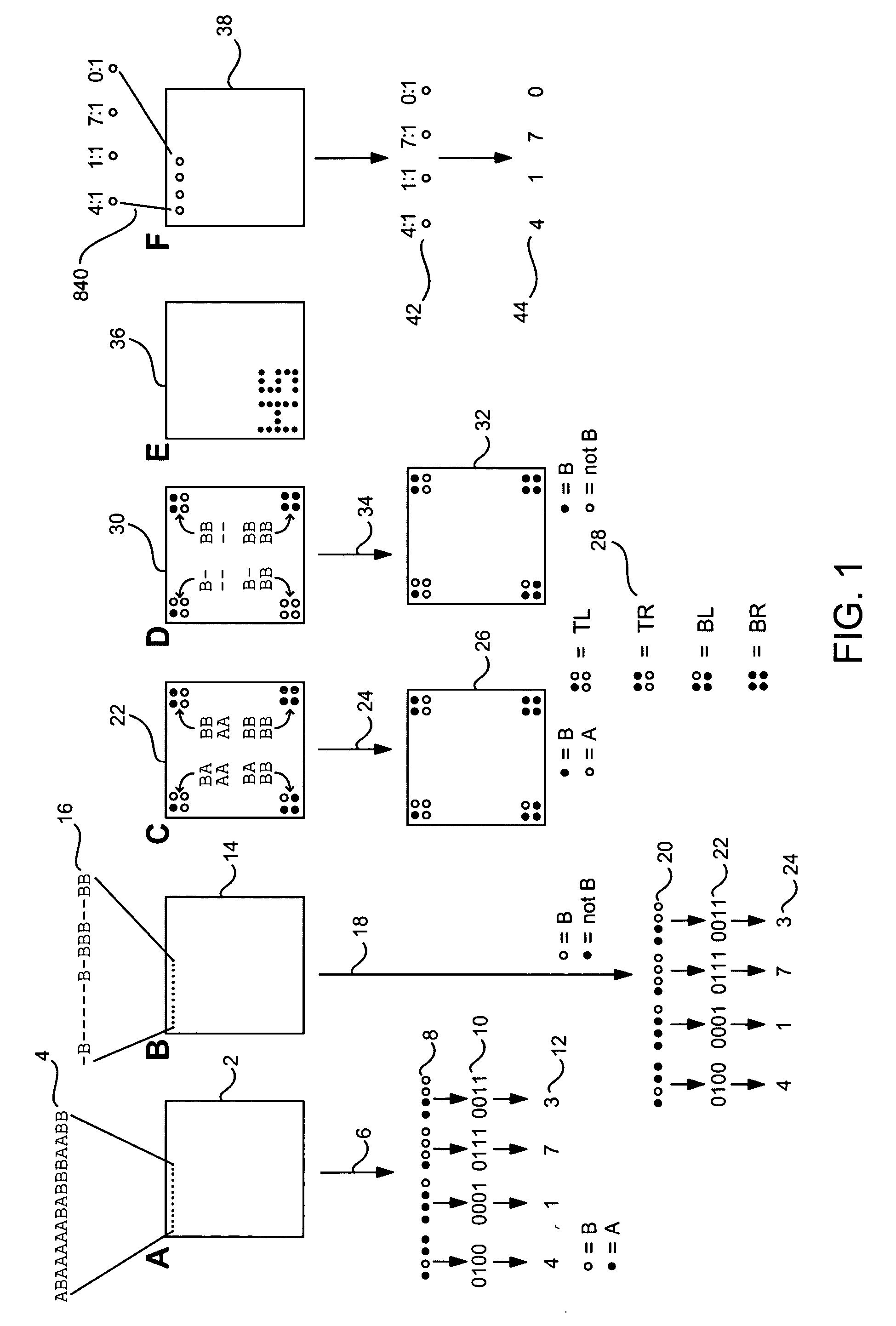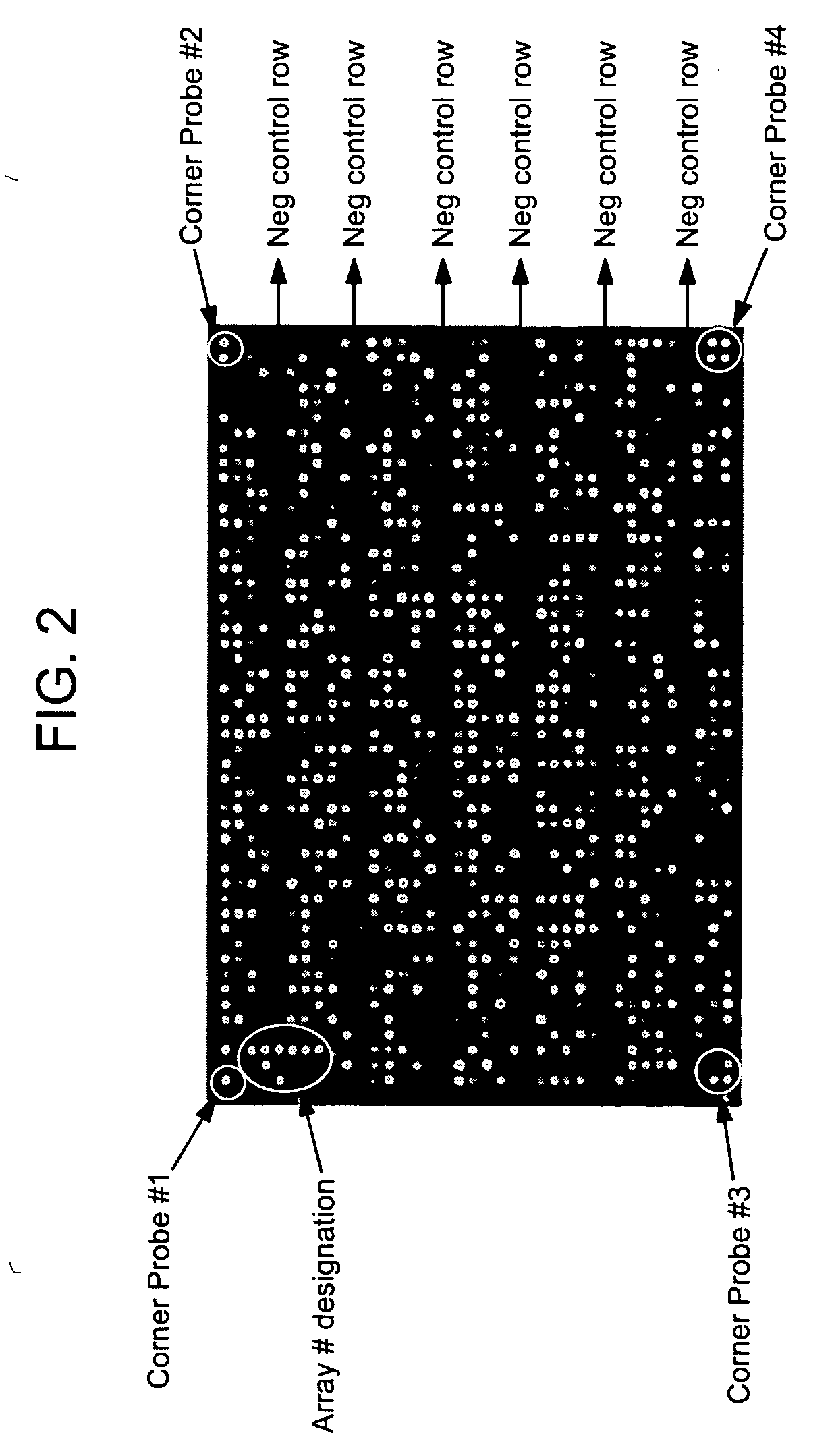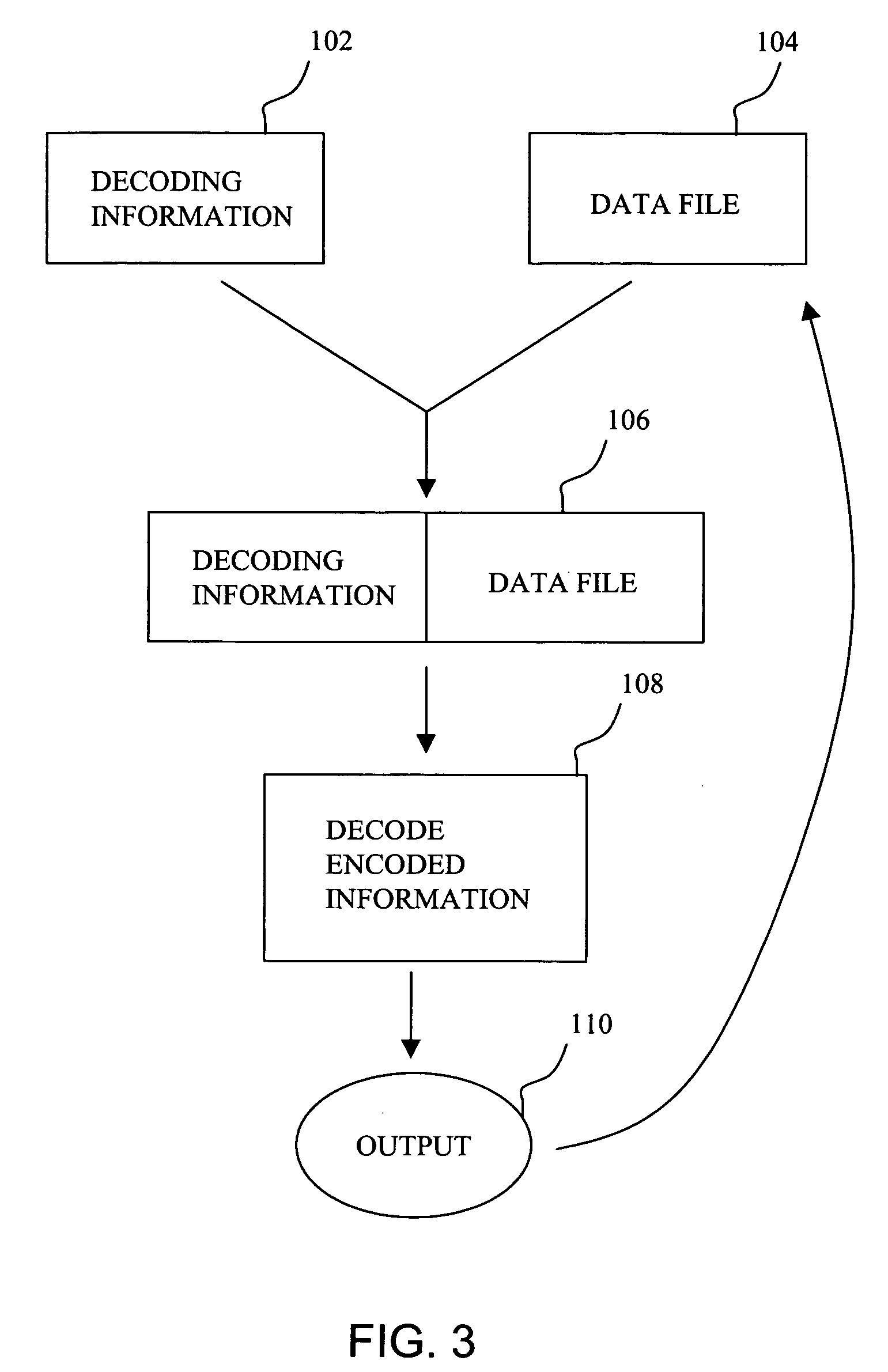Methods for encoding non-biological information on microarrays
- Summary
- Abstract
- Description
- Claims
- Application Information
AI Technical Summary
Benefits of technology
Problems solved by technology
Method used
Image
Examples
example 1
[0145] A system of targets, probes and labeling techniques may be used to encode non-biological information into a microarray, using, for example, binary labeling techniques. The binary code may be represented by the presence or a single label (i.e., a radioactive or non-radioactive label), or by the presence of one or two distinct distinguishable labels (e.g., generated Cy-3 or Cy-5). By extension, the system may be used to encode an alphabet of greater than 2 symbols where the normalized intensity of a color may represent unique, distinguishable symbols (i.e., 10 intensity levels could represent digits 0-9, twenty six intensity levels could represent the letters A-Z, etc.). Positive and negative control probes can also be laid out on the microarray to display a symbol that can be human readable, such as number, letter, graphic icon, etc. FIG. 2 shows an image of a single array of a multi-array substrate, hybridized with a labeled probe. The hybridization pattern provides non-biolo...
example 2
[0146] In this example, data from a multi-array substrate containing array information feathers is decoded to indicate the array from which the data was obtained.
[0147] Each array of a multi-array substrate containing eight arrays on a single slide is hybridized with a different sample. Data is obtained from this substrate by scanning the slide to make an image of the slide, and dividing the image into eight smaller images, each representing an individual array. Each of those smaller images is processed to provide eight files of data.
[0148] In order to indicate which file of data corresponds to which array, four features are used, in the case features 3, 4, 5, and 6. Each of the features either produce a signal, or do not produce a signal (depending on the probe composition present in each of the features or the sample hybridized to each of the arrays), to produce a binary coded decimal.
[0149] In this example, for each of the arrays, the following data is obtained, where “+” indi...
PUM
| Property | Measurement | Unit |
|---|---|---|
| Brightness | aaaaa | aaaaa |
Abstract
Description
Claims
Application Information
 Login to View More
Login to View More - R&D
- Intellectual Property
- Life Sciences
- Materials
- Tech Scout
- Unparalleled Data Quality
- Higher Quality Content
- 60% Fewer Hallucinations
Browse by: Latest US Patents, China's latest patents, Technical Efficacy Thesaurus, Application Domain, Technology Topic, Popular Technical Reports.
© 2025 PatSnap. All rights reserved.Legal|Privacy policy|Modern Slavery Act Transparency Statement|Sitemap|About US| Contact US: help@patsnap.com



